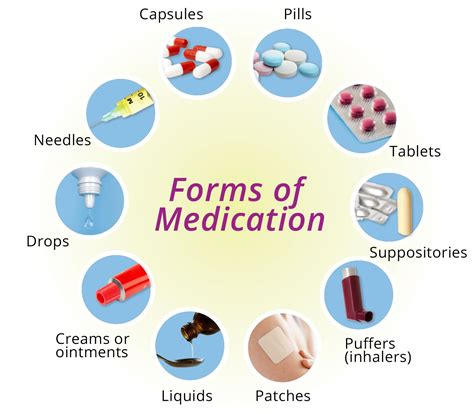Intro
Discover 5 effective ways to treat fungal nail infections, including home remedies, oral medications, and topical treatments, to help prevent nail fungus and promote healthy nail growth.
Fungal nail infections, also known as onychomycosis, are a common condition that affects millions of people worldwide. They can cause thickening, discoloration, and brittleness of the nails, leading to discomfort, pain, and embarrassment. If left untreated, fungal nail infections can spread to other nails and even other parts of the body. Fortunately, there are several effective ways to treat fungal nail infections, and in this article, we will explore five of the most popular methods.
Fungal nail infections are typically caused by a type of fungus called dermatophytes, which thrive in warm, moist environments. They can be spread through direct contact with an infected person, contaminated surfaces, or by sharing personal care items. The symptoms of fungal nail infections can vary depending on the severity of the infection, but common signs include yellowing or thickening of the nails, brittleness, and crumbling of the nail edges.
The importance of treating fungal nail infections cannot be overstated. If left untreated, the infection can spread to other nails, causing further discomfort and pain. In severe cases, fungal nail infections can even lead to more serious health problems, such as cellulitis, a bacterial skin infection that can spread to the bloodstream. Furthermore, fungal nail infections can have a significant impact on a person's self-esteem and quality of life, making it essential to seek treatment as soon as possible.
Treatment Options for Fungal Nail Infections

There are several treatment options available for fungal nail infections, each with its own advantages and disadvantages. The most effective treatment option will depend on the severity of the infection, the type of fungus causing the infection, and the individual's overall health.
Topical Treatments
Topical treatments are a popular option for treating fungal nail infections, especially in the early stages. These treatments typically involve applying a cream, oil, or lacquer directly to the affected nail. Topical treatments can be prescribed by a doctor or purchased over-the-counter. Some common topical treatments for fungal nail infections include: * Urea-based creams, which help to soften and remove the infected nail tissue * Antifungal creams, which contain ingredients such as clotrimazole or miconazole * Tea tree oil, which has antifungal properties and can help to combat the infectionOral Medications

Oral medications are often prescribed for more severe cases of fungal nail infections. These medications work by targeting the fungus that is causing the infection, helping to clear up the infection and promote healthy nail growth. Some common oral medications for fungal nail infections include:
- Terbinafine, which is an antifungal medication that is effective against a wide range of fungi
- Itraconazole, which is an antifungal medication that is often used to treat fungal nail infections
- Fluconazole, which is an antifungal medication that is often used to treat fungal nail infections, especially those caused by yeast
Laser Treatment
Laser treatment is a relatively new option for treating fungal nail infections. This treatment involves using a special laser to heat up the fungus that is causing the infection, helping to kill it and promote healthy nail growth. Laser treatment is often used in combination with topical or oral treatments, and can be an effective option for those who have tried other treatments without success.Natural Remedies

Natural remedies are a popular option for treating fungal nail infections, especially for those who prefer to avoid prescription medications. Some common natural remedies for fungal nail infections include:
- Vinegar soaks, which can help to balance the pH of the nail and prevent the growth of fungus
- Garlic, which has antifungal properties and can help to combat the infection
- Epsom salt soaks, which can help to reduce inflammation and promote healthy nail growth
Surgical Options
In severe cases of fungal nail infections, surgical options may be necessary. This can involve removing the infected nail, either partially or completely, to help prevent the spread of the infection and promote healthy nail growth. Surgical options are typically used as a last resort, and are often used in combination with other treatments.Prevention and Maintenance

Preventing fungal nail infections is often easier than treating them. There are several steps that can be taken to help prevent fungal nail infections, including:
- Keeping the feet clean and dry, especially between the toes
- Wearing shoes that fit properly and are made of breathable materials
- Avoiding sharing personal care items, such as nail clippers or files
- Wearing socks made of natural fibers, such as cotton or wool
Home Care
Home care is an essential part of treating and preventing fungal nail infections. This can involve keeping the nails clean and dry, avoiding harsh chemicals or detergents, and using a nail brush to gently scrub the nails. It is also important to avoid sharing personal care items, and to wear shoes that fit properly and are made of breathable materials.Conclusion and Next Steps

Fungal nail infections can be a frustrating and embarrassing condition, but there are several effective treatment options available. By understanding the causes and symptoms of fungal nail infections, and by exploring the various treatment options, individuals can take the first step towards clearing up the infection and promoting healthy nail growth. Whether through topical treatments, oral medications, laser treatment, natural remedies, or surgical options, there is a treatment option available for everyone.
If you are suffering from a fungal nail infection, it is essential to seek treatment as soon as possible. By working with a healthcare professional, you can determine the best course of treatment for your individual needs, and take the first step towards clearing up the infection and promoting healthy nail growth.
What are the symptoms of fungal nail infections?
+The symptoms of fungal nail infections can vary depending on the severity of the infection, but common signs include yellowing or thickening of the nails, brittleness, and crumbling of the nail edges.
How are fungal nail infections treated?
+Fungal nail infections can be treated with topical treatments, oral medications, laser treatment, natural remedies, or surgical options. The most effective treatment option will depend on the severity of the infection, the type of fungus causing the infection, and the individual's overall health.
Can fungal nail infections be prevented?
+Yes, fungal nail infections can be prevented by keeping the feet clean and dry, wearing shoes that fit properly and are made of breathable materials, avoiding sharing personal care items, and wearing socks made of natural fibers.
How long does it take to treat a fungal nail infection?
+The length of time it takes to treat a fungal nail infection can vary depending on the severity of the infection and the treatment option used. Topical treatments can take several months to a year to clear up the infection, while oral medications can take several weeks to several months.
Are fungal nail infections contagious?
+Yes, fungal nail infections can be contagious. The fungus that causes the infection can be spread through direct contact with an infected person, contaminated surfaces, or by sharing personal care items.
We hope this article has provided you with a comprehensive understanding of fungal nail infections and the various treatment options available. If you have any further questions or concerns, please don't hesitate to reach out. Share this article with your friends and family to help spread awareness about fungal nail infections, and take the first step towards promoting healthy nail growth and preventing the spread of infection.
